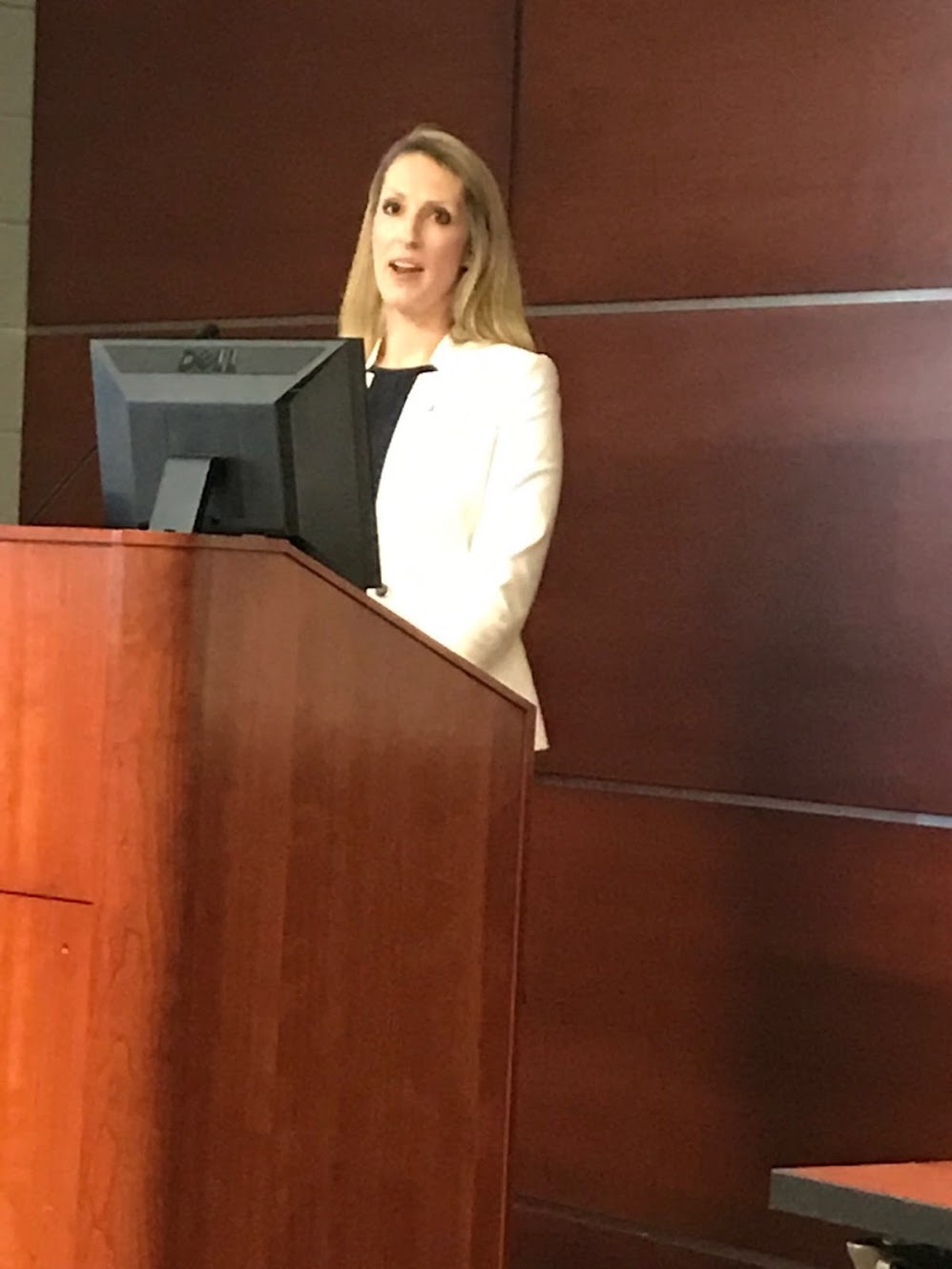Economic Equality Caucus
which advocates for economic equality across the USA.
| Home | Organizational Structure | State Coordinators | Executive Director | Caucus Articles | Memberships | |||||
| "Delta Vision, Delta Voices" | ||||||||||
|
Help Advocate for Economic Progress and Equality. Donate to the Delta Caucus/Economic Equality Caucus. |
||||||||||
Delta Grassroots Caucus Events

Credit Michael Hibblen/ KUAR News, Arkansas Public Radio; Former President Bill Clinton speaking to the Delta Grassroots Caucus on May 2, 2013, at the University of Arkansas Clinton School of Public Service, Little Rock

U. S. Senator John Boozman, Arkansas, at a Delta Grassroots Caucus meeting at the US Capitol

Brad Cole, Executive Director of the Municipal League of Illinois; previously a senior aide to former Republican US Sen. Mark Kirk of Illinois, earlier Mayor of Carbondale, Illinois, veteran Delta regional advocate, speaking at the Delta regional conference in West Memphis, Arkansas on April 26, 2019.

President Bill Clinton makes a comment to Delta Caucus Director Lee Powell at a meeting in Blytheville, Arkansas (in the northeast Arkansas Delta) on Nov. 2, 2014

The Delta Caucus would like to pay tribute to the late, great U.S. Sen. Thad Cochran of Mississippi, a powerful force in the US Senate for decades and a champion for the Delta. Sen. Cochran passed away on May 30, 2019. He spoke to the Delta Caucus on many occasions over the years (he is pictured above speaking to a Caucus event on Capitol Hill in Washington, DC) and his thoughtful, courteous and bipartisan leadership will be sorely missed.

Marcie Lawson, Executive Director, Sikeston, Missouri Regional Chamber and Area Economic Development Corporation, speaking at the Delta regional conference in West Memphis, Arkansas on April 26, 2019.

Alan Gumbel, Greater Memphis Alliance for a Competitive Workforce, Memphis, Tennessee, speaking at the Delta regional conference in West Memphis, Arkansas on April 26, 2019.

Mayor Shirley Washington of Pine Bluff, AR, speaking to the Delta Caucus at the Arkansas Capitol Rotunda in 2017.
Constructive Criticism of DRA Regional Strategic Planning--Second in a Series
Posted on June 25, 2009 at 02:38 PM
The Delta Regional Authority document completed in June, 2008, entitled “Rethinking the Delta: 2008-2013 Regional Development Plan,” contains some good sections as well as some sections with which the grassroots partners of the Delta Grassroots Caucus disagree. Our coalition always has and always will support the DRA as an institution, and as many times as we have been supportive of the work of this agency we have earned the right to give it some constructive criticism. This is intended to be helpful to supporters of the DRA.
We have discussed this plan in depth with Desha County Judge Mark McElroy and a number of other grassroots leaders. Among our criticisms are that one passage in the report could be construed as advocating a preference for larger communities in the Delta, although we feel that the basic thrust of most of the report is just the opposite—that funding should be based on the merits without regard to size or wealth, as stated in the comment on page 9 of the report. We explain this below in this message.
We also feel that certain passages rely on too much esoteric jargon, that some passages are condescending toward the Delta (almost certainly those written by consultants hired to help on this project, or at least we hope so), and that at times there are too many statements calling for additional plans, surveys and reports. Some of these plans and reports may be valid when the time comes, but we thought the purpose of this plan was to provide specific recommendations about policy solutions for the Delta, rather than to issue calls for more plans and studies.
Other DRA strategic plans on transportation and information technology were excellent and are still very useful today. We would first of all again emphasize that other strategic plans of the DRA—such as the Delta Development Highway System plan, the information technology plan, and some of the state plans such as the Arkansas state plan of 2008—are excellent. We should recall that the DRA is a federal-state partnership, and contributions from the local, state, regional and federal levels all have importance.
In the first message in this series, we gave credit to some of the good sections of the 2008 plan—it correctly notes certain successful programs such as the DRA federal grant program, the Healthy Delta Initiative, the Delta Doctors program, the strategic plans on transportation and information technology. It sets out much more realistic performance measures than did the 2002 strategic plan, as we explained in the first message on June 23, 2009, which is on the website at www.mdgc.us.
Valid comments on education: The plan focuses on developing a more competitive workforce. In addition to the constructive points summarized in that first message, we should also add that the plan correctly states that education must be taken into consideration in any effort to improve economic development. In the past, education was often compartmentalized into a separate category, but it is now widely recognized that in retaining talent as well as attracting people move into the region, a strong educational system is crucial.
Valid call for greater utilization of senior citizens’ talents: The plan is also correct to call for the greater utilization of seniors in the regional economy. The Delta has an unusually high proportion of senior citizens, in part because in some areas many people are moving into the rural Delta for the sunny weather, lower cost of living and other attractions. In many other communities, there of course has been an out-migration as young people leave in search of better job opportunities. The plan correctly calls for collaboration with AARP, Area Aging Councils, the Senior Community Service Employment Program, the Service Corps of Retired Executives, businesses and government agencies in utilizing the great experience and talents of many seniors. This may take the form of volunteering, part-time work, senior entrepreneurship and investment, and other constructive activities. This passage can be found on pages 95 to 99 of the regional plan, available at dra.gov.
The plan begins with a comment that few could argue with: “The suffering laid bare by Hurricane Katrina is not a phenomenon isolated to the Gulf Coast; it extends throughout one of North America’s most fertile basins and along the country’s most prominent river. Predominantly rural, the Mississippi River Delta region has the highest concentration of disadvantaged populations in the country.” The document correctly states that “there is little doubt that this region represents the single greatest concentration of need in the country.”
Having sufficiently given credit for some of the meritorious sections of this plan, we can turn to some concerns in the spirit of constructive criticism:
I. FIRST AND FOREMOST, We do not read this plan as holding that federal funding should be channeled into larger communities that have already attained critical mass, but rather as providing guidance to all Delta communities on how to develop critical mass.
If there is anything in this plan that the DRA interprets as calling for a policy of discouraging funding for smaller, impoverished communities, then we would emphatically oppose the DRA’s policy. Unfortunately, there are comments that are either in great tension with each other, to be charitable, or flatly contradict each other, to be blunt. Here are the following two comments on this key subject:
“The federal grant program will remain open to all communities in the Delta, regardless of size or wealth. The purpose is not to reward those communities that have already achieved critical mass; rather, it is to provide an investment strategy for those Delta communities that have not.” (page 9)
This is a good statement and we applaud it for rejecting any bias in favor of larger communities.
A far more unfortunate comment, however appears on page 55 of Appendix A on critical mass communities and the critical mass economic model:
Characteristic #9: Total establishment employment
“The model revealed that job growth over the past 20 years was faster in large population counties than in small ones. This correlation reflects a long-term, worldwide trend of urbanization. The implication for the DRA is that an increasing proportion of the population it serves lives in metropolitan areas. In response, the Authority must adapt its programs to be able to serve the needs of this population. While not abandoning its rural areas, the DRA cannot ignore the growing influence of larger communities.” (page 55)
Given the frequent references elsewhere in the report to the poverty in the region and the description of the region as “predominantly rural” at the beginning of the report, we would regard the above comment as contradicting much of the rest of the report. The most impoverished areas in the region are not being urbanized, are not “metropolitan areas,” and the comment that the DRA should not “abandon its rural areas,” are inconsistent with the statement that funding should go to all communities on the merits, without regard to size or wealth. We strongly disagree with this comment on page 55 and would recommend it be rewritten and the anti-rural bias stricken from any future DRA documents.
CRITICAL MASS ANALYSIS
Stripped of the unfortunate jargon in this section, it emphasizes seven characteristics that are valuable:
- Healthy people
- Expanding population
- Skilled workforce
- Multi-Cultural (Foreign-born people moving into a community—we should give them credit for supporting diversity, especially in welcoming Hispanic people, who do a lot of hard work and contribute to the regional economy)
- New companies
- Entrepreneurial culture
- Community-Wide Culture of Learning
This section (pages 45 to 55) was clearly written by economic development technocrats or other consultants and uses a great deal of jargon that only economists would appreciate. They state: “The Critical Mass (CM) Model correctly predicts the growth trajectory of 80 percent of the DRA’s 240 counties over a 20-year period.” What 20-year period are they referring to? From 1984 to 2004, and what they are saying is that a number of key variables predicted economic growth in their study of the data over that period. This may have some value in discerning some key elements in economic growth, but we would also ask why we should be focusing on the period from 25 years ago to 5 years ago? It’s a new day and we need to look to the future. Conditions were so different from 1984 to 1994 that going back that far is of very limited usefulness.
Over-use of jargon: This section uses jargon of a kind that is not useful for anyone who is not an economist or an economic development consultant. We know they would say they were just “explaining their methodology,” but they would have been well advised to leave that section out. It comes off as a patronizing effort to cite complex jargon, as if to say, “aren’t we brilliant?” Here are examples in the explanation how to develop a “predictive model”:
• “Test potentially significant variables in an iterative process: Several iterations of a multiple regression model were run, employing essentially a one-factor-at-a-time (OFAT) experimental type approach, adding or removing variables individually or in small numbers to identify interaction effects. This process continued until the amount of variation explained by the model was maximized. • Verify that conclusions are consistent with academic literature. The statistical analysis was reinforced in an ongoing manner with research using web-based, academic, and other sources. • Sort modeling results into preliminary quartiles or tiers. We developed tier ranks (1 though 4, with 1 being the best) for each of the DRA counties using the final DRA dataset and regression run.” (page 49)
With all due respect, local leaders who are on the ground and fighting in the trenches of economic development in the Delta do not consult “academic literature.” They do not talk in terms of “multiple regression models” and “variables” and the OFAT experimental type approach. When we discussed this part of the report with local leaders such as Desha County Judge Mark McElroy, he tried to listen seriously but had difficulty keeping a straight face, to put it as diplomatically as possible.
We could also do without the patronizing language in this statement, such as “Communities that can supply a professional and technical workforce will be rewarded.” (page 47) Yes, we are all in favor of a professional and technical workforce, but we could do without being told that some higher power will reward the country folks in the Delta if they will have sense enough to develop a strong workforce. We know this comment was not intended to be as condescending as it sounds, but it definitely reads that way from the viewpoint of many people in the region.
In the section summarizing the 10 variables used, many of the constructive points are just ratifying successful DRA programs that we already knew about like the Delta Doctors program, Healthy Delta, and others. Another is “patents per capita,” which of course is so esoteric as to be of limited usefulness.
The ninth characteristic, “Total establishment employment,” is the statement with the anti-rural bias that we wholeheartedly rejected in our statement above.
CONSTANT USE OF SUCCESS STORIES FROM OUTSIDE THE REGION: In utilizing success stories, most of them come from places quite remote from the Delta: Michigan, Texas, North Carolina, Massachusetts, Chicago, Canada and Australia are all cited in various passages throughout the report as having exemplary programs on various phases of economic development. There are a few exceptions, such as a much deserved reference to the excellent KIPP school in Helena-West Helena.
The great majority of success stories in the region that are discussed are the DRA programs cited above. Surely the authors do not think that the DRA has most of the successful accomplishments in the region. But there are very large numbers of “best practices” and successful models that are cited in many other states and even foreign countries. This sends a message, intended or not, that the Delta region does not have exemplary success stories and us poor Delta devils have to look to the rest of the country to find out how we can improve ourselves.
When we have countless good models in the Delta region, why does this report constantly cite projects in places like Michigan, Texas, Massachusetts, Canada and Australia? It is quite condescending. Beyond that, we have superb role models within our region that could have been cited:
• Nucor Yamato steel plant in Blytheville, Arkansas happens to be the most efficient steel mill in America. They have exemplary policies of rewarding education and skills training for their employees, and also aid education and other philanthropic initiatives in the broader community. In the recent recession, they have not laid off any workers, an exemplary example for all other businesses. They employ many people with high salaries and high skills.
• The city of Blytheville, Arkansas, in addition to Nucor’s success, has in recent years succeeded in attracting many companies and creating jobs in that fine community Mayor Barrett Harrison and many other local leaders in that fine community are to be commended for that. Rather than go off to a distant state for a successful model, why not cite the successes of Blytheville right there in the heart of the Delta?
• Potlatch in southeast Arkansas has often been praised as an excellent business leader, as Desha County Judge Mark McElroy and many others can attest.
• Southern Illinois Delta Empowerment Zone has many success stories, as does Susanna Wesley Family Learning Center in East Prairie, Missouri, the East Arkansas Enterprise Community in the Forrest City, Arkansas area, Coahoma College in Clarksdale, Mississippi, the work of local advocates like Minnie Bommer in Covington, Tennessee, and countless other effective grassroots leaders in Louisiana, Arkansas, Mississippi and the rest of the region. This report should have been chock full of success stories from leaders like these. We would suggest future reports ought to correct that error and not condescendingly tell us about the great projects in North Carolina, Massachusetts, Texas and Canada.
INAPPROPRIATE AND CONDESCENDING ANALOGY OF THE DELTA REGION AND THE GREAT NORTHERN PLAINS:
In suggesting that the Delta should “benchmark comparable areas,” the report suggests “a benchmarking process should consider regions that, at least on the surface, seem to have more in common with the Delta region geographically and culturally. For example, the Northern Plains states (including the Dakotas, Iowa and Nebraska) share a few common characteristics with the Delta. Predominantly rural, the Northern Plains states struggle with unfavorable demographics and a thinning population. But beyond these obstacles, the Northern Plains states set examples that are worth noting: They have relatively high educational attainment levels, consistently low unemployment, low business and business costs, reputable universities, and small anchor cities like Omaha and Fargo that have developed relatively innovative economies despite their small size and remoteness.”
It would be harder to imagine a more inappropriate, not to say insulting comparison. First of all, did anyone inform the brilliant writers of this section that Iowa, Nebraska and the Dakotas did not suffer through all the travails of slavery and Jim Crow? We have made tremendous strides in our region in race relations, and as a diverse organization with large numbers of African Americans, we are deeply proud of that progress. But with all due respect to the Northern Plains states, they did not have the history that our region had to contend with. Yes it’s a new day and we are moving on. That northern region is predominantly white, and in fact the only serious pockets of poverty in those states—at least compared to the dire poverty in the Delta—are in Native American reservations. To compare these two regions is grossly inappropriate.
A much more appropriate comparison would be the Delta and the Southwest Border, with its diverse population and the unfortunate history of discrimination against many Hispanics, as well as against African Americans. The Southeast Crescent would also be an excellent comparison, in the more impoverished rural areas of Georgia, the Carolinas on up to southside Virginia.
“High educational attainment and low unemployment in the Northern Plains states?” The patronizing language of this passage is remarkable. So in the Northern Plains they have “high educational attainments, consistently low unemployment…” Yes, the Delta lags behind in education and employment. What is the point of this comparison? Specific policy recommendations as to how to improve the Delta’s plight would have been helpful. The comparison is useless and condescending.
“Reputable universities?” Then we are informed that this region has “reputable universities.” Now that is interesting to note—so the Delta’s many fine institutions of higher learning are not “reputable universities?” We believe Southern Illinois University, Murray State University, Southeast Missouri State University, the University of Memphis, Arkansas State University, Mid-South Community College in West Memphis, Arkansas Northeastern College in Blytheville, Coahoma Community College in Clarksdale, Mississippi, Delta State University, University of Arkansas-Pine Bluff, Grambling, Southern University, LSU and Ole Miss all have a great deal to recommend them. Some studies from Harvard and universities in North Carolina and elsewhere are cited in the report, but so are some from the region, to be fair. The comment about “reputable universities” in the Northern Plains was nonetheless insensitive and unnecessary.
Many of the people in the Delta Caucus, by the way, graduated from universities across the country like the University of Virginia, George Washington University, Yale, as well as universities in the region. We could do without the elitist and condescending implications of the remark about “reputable universities.”
We can just hear the authors saying now, “Oh, we meant no condescension, we were just noting the advantages of the Great Plains states.” The report says what it says and it is as condescending as any comments we have ever read.
Greater sensitivity regarding diversity would be advisable in this passage: The comparison is doubly unfortunate because the Northern area is predominantly white whereas the Delta is of course highly diverse, with many whites, but many African Americans and a growing Hispanic population, as well as some Native Americans and Asian Americans. It is unreal that authors of this report would not have been more sensitive to the critical question of the Delta’s highly diverse population. We know there are other passages where they briefly mention racial inequality. But this passage is blind to the diversity issue.
“Omaha and Fargo are innovative despite their remoteness?” Finally, Omaha and Fargo have developed innovative economies despite their small size and remoteness. Fine, congratulations to them, we say. At that point we expected some helpful pointers as to how these innovators in Omaha and Fargo achieved this great result, and how we could replicate that in the Delta. There was none. They moved on to a passage citing Upstate New York and central Pennsylvania as other comparable “benchmark areas.”
“QUALITY OF PLACE” PHRASE IN MOST CASES IS NOT VERY WELL DEFINED:
The report refers constantly to the concept of “quality of place” as being superior to “quality of life.” Quality of life refers to good schools, safe streets, pleasant weather, and the report agrees with those characteristics. According to the report, “quality of life” assumes that everyone thrives in the same environment and is attracted to the same amenities, and that current residents’ view of what makes a community would be shared by all.
We never knew that people who supported “quality of life” were negative to changes in their communities or did not welcome newcomers. This is an artificial and incorrect definition. These slogans and catch phrases have little use unless they are more clearly defined.
In an effort to become more definite, the report states that in contrast to quality of life, “quality of place considers what is attractive to a range of residents, both old and new. The idea of quality of place accommodates growth and recognizes the benefits of change. Quality of place is about providing options, not just for current residents, but for those who will be residents in the future.”
This is all very nice and of course we agree with the need for change and the need to accommodate future residents. It is also condescending and attributes antiquated beliefs to those who supposedly are stuck in the past in this caricature of what people have traditionally meant when they talked about quality of life. The comments about quality of place are perfectly consistent with what people have believed when they used the slightly different term, “quality of life.” This slogan has very limited usefulness, unless it is defined in a far more concrete and less condescending way.
HOW DO YOU DEFINE “FAILING COMMUNITIES?” The report states that “The DRA recognizes that to be an effective agency, its mission cannot be limited to reducing unemployment and poverty in failing communities.” How do they define “failing communities?” Certainly not Helena-West Helena, which despite its economic problems still has a population of approximately 15,0000 or more. Certainly not Forrest City or Pine Bluff. So maybe they are thinking about Gould, Marianna or Des Arc? Yes, money should not be thrown away on unwise projects. What else is new?
We should also point out that a smaller community might have the potential to thrive in the future. Moreover, a smaller community will usually apply for smaller levels of funding than a much larger community—not always but in many cases the seed money for a smaller community would likely be smaller. A useful project in one small community could very well aid employment opportunities for those commuting in a wider area. If small communities do file hopelessly large-scale applications, the funding analysis process would prevent them from devouring huge chunks of funding.
The funding decisions should be made on the merits, without a bias in favor of size or wealth, as stated in the correct comment on page 9.
GENERALIZED CALLS FOR SWEEPING CHANGES, WITHOUT SPECIFICS On page 19, we read, (all these statements are in the imperative, making it unclear as to which agency is supposed to be performing the action):“Enhance workforce development in the Delta by providing all adults access to training in computer literacy, workforce skills, and business practices such as e-commerce and entrepreneurship.” (Our italics).
This is great and we hope it happens. But how do we make this happen? Who will fund it? How much will it cost? In general, this report was not as bad as many others we have seen calling for grandiose changes, without much specificity as to how to go about doing it. But to the extent it can be avoided, all such pie-in-the-sky generalizations should be eliminated in the future.
CONSTANT REFERENCES TO MORE PLANS, SURVEYS, AND MEETINGS: For example, on page 17, the report states that “In the fourth year of the five year plan, conduct a feasibility study to evaluate the specific challenges in the region” that their proposal for a new Delta Institute should address. It proceeds to say in developing the active support of the private sector, “Begin by commissioning a survey of regional employers to gauge their views on the most pressing workforce issues in the region.” These findings would then be presented at a regional summit.
Similarly, we read on page 19 that in expanding transportation, “Prepare an overall multimodal transportation plan for the region.” That is all well and good. But we thought this plan was supposed to tell us something about how to promote economic development, and not to call for more plans. Further down, we read “Fund a next-step feasibility study for new energy refining capacity and facilities in the Delta.” Again, all well and good, but rather than calling for more plans, we would have preferred specifics on energy policy as opposed to the blanket statement—“Go out and do another plan.” Then we read, “Create a plan to develop the DRA Center for BioTechnology and Alternate Fuels. On page 21 we read, “create an advisory council” of the region’s foundations and business leaders. On page 24 we have a proposal for another Healthy Delta summit. Again on page 27 we see that in the fourth year of the five-year plan, “conduct a feasibility study” to evaluate the proposed Delta Institute’s resources.
We could cite many other examples like this. We are not saying that all these plans, surveys, summits and advisory councils are bad. In fact, some of them may be good when the time comes. There are so many calls for plans, surveys, reports, and meetings that there are times when you wonder, “Is this a plan that says, ‘You all go out and do more plans and studies.’”.
WHY IS THERE A SECTION ABOUT HOW TO MANAGE CONFERENCES IN A REGIONAL ECONOMIC DEVELOPMENT PLAN?
On pages 109 to 112, they provide information about how moderators should not allow speakers to go over their allotted time, how to set up meeting rooms, preparing your speakers, scheduling time, use of visual aids. While planning conferences is an important activity, there were better uses for space in a five-year regional economic development plan.
STATEWIDE DATA Much of the document, to its credit, reviews data that are confined to the 252 counties and parishes of the DRA. We applaud them for doing that.
However, if any data refers to statewide statistics, these should be eliminated in the future. The diabetes data on page 23 apparently refers to statewide data. This leads to a highly skewed result for Illinois, Alabama, and Kentucky because the Delta areas of those states are so small relative to the entire state population. Even in Missouri, which has a substantial chunk of the region and approximately 29 counties, statewide statistics include Kansas City, St. Louis and other areas that are far distant from the southeast Missouri Delta.
For Tennessee, the statistics are somewhat more relevant due to the larger Tennessee DRA population, but even there it must be considered that Memphis dominates the numbers. The large prosperous, urban areas in Memphis have little in common with the rural, impoverished Delta. It is certainly true that the lower income neighborhoods in Memphis may have some problems somewhat similar. But the rural west Tennessee Delta is obviously quite different from Memphis. We welcome Memphis as a key city in the region and applaud the fine participation of such Memphians as Alan Gumbel, or the National Civil Rights Museum personnel who have spoken at our events on several occasions, but its different nature from much of the region needs to be acknowledged.
Arkansas, Louisiana and Mississippi all have large DRA populations, so the statewide figures begin to be much more relevant in those states. However, even there, we all know that for example, east Arkansas is very different from central or northwest Arkansas, which are far more urban and prosperous. Statewide data from Arkansas, Louisiana and Mississippi should be cited with information indicating that however low the figures might be for the states as a whole, they are even worse for the Delta areas of each state.
CONCLUSION
These are obviously some candid criticisms. We know DRA personnel will disagree, and that is their prerogative. These are just one organization’s views. We again stress that the transportation, information technology, and some of the state plans such as Arkansas’ are excellent. The DRA has done some fine work in its federal grant program, Delta Doctors program, Healthy Delta, and is an important unifying force for the region. We are sure that the DRA personnel would not expect us to agree with everything they do.
We will follow up with some comments about the Arkansas plan in the next part of this series. Since we have made some criticisms in this message, the Arkansas plan will enable us to point out our view of how a strategic plan should be drafted. Thanks very much. Lee Powell, executive director, MDGC (202) 360-6347
Back to the top